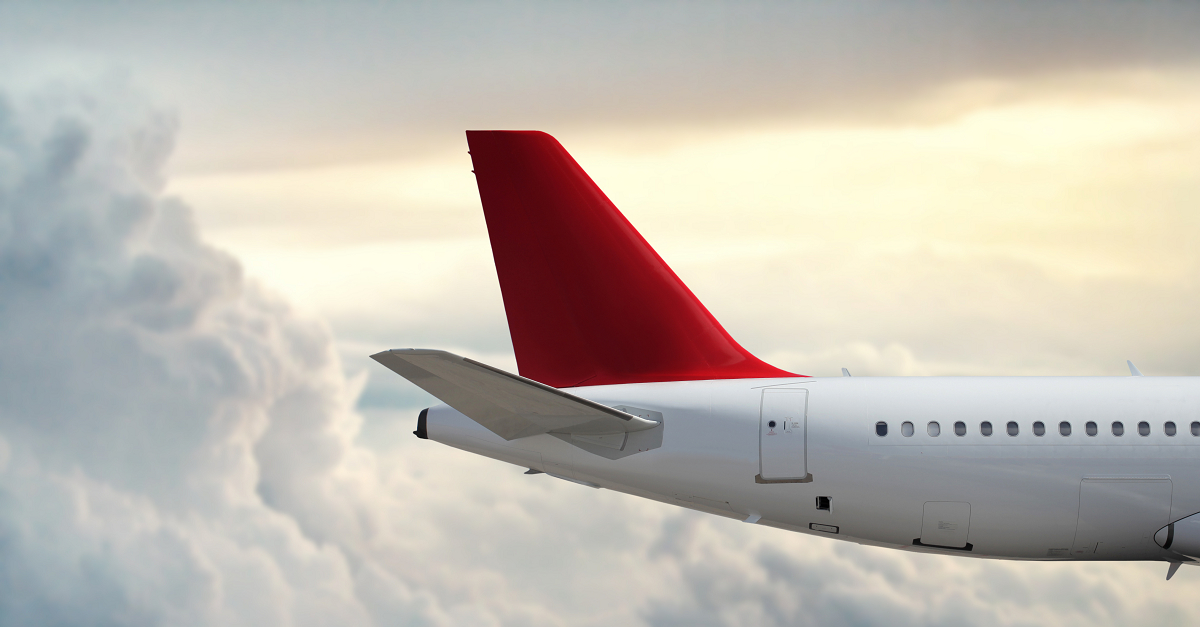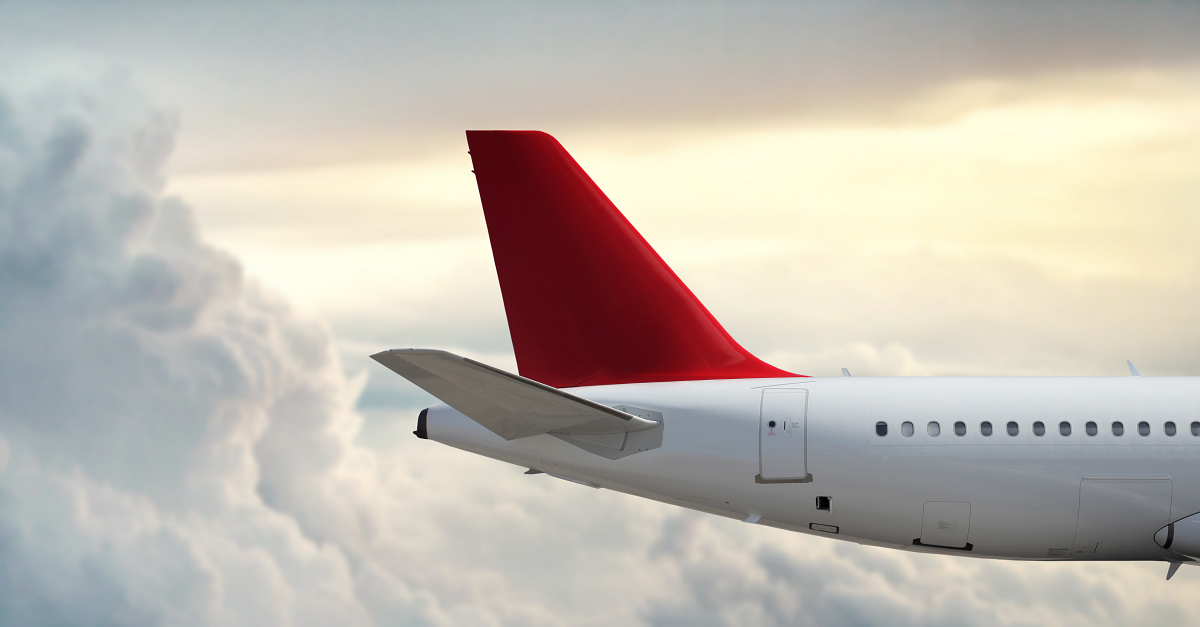
A co-pilot’s fat-fingered entry into an iPad caused a plane to scrape its tail on the ground – a potentially deadly incident – during takeoff in August 2014, the Australian Transport Safety Bureau (ATSB) has concluded.
Actually, make that two data entry errors, given that the pilot also forgot to carry the “1” when he was jotting down his calculations for the plane’s takeoff weight on a notepad.
The ATSB released the results of its investigation on Monday.
The investigation found that the tailstrike was caused by two, independent data entry mistakes that both led to an identical, erroneous takeoff weight being input.
The captain’s mistake was that he recorded the zero fuel weight and fuel load on a notepad in order to come to the takeoff weight.
But while he was doing his calculation, he failed to carry the 1.
He reported the takeoff weight of 66,400 kg into his on-board performance tool to figure out the take-off speeds and engine setting, but in actuality, the plane was 10,000 kg heavier than that.
What are the chances that his co-pilot would make a second error and come up with the identically wrong takeoff weight?
That’s exactly what happened: the first officer calculated correctly to arrive at a takeoff weight of 76,400 kg, but that’s not what he input into his iPad.
Instead, he made what the ATSB called a “transposition error.”
The ATSB defined that term as being “when an individual inadvertently swaps two adjacent numbers or letters while speaking or writing down a value or word.”
In other words, the co-pilot fat-fingered the incorrect total weight of 66,400, chopping 10,000 kg off the correct weight.
Given that both the pilot and the first officer input matching takeoff weights, the crew didn’t pick up on the error when they compared the two figures.
Because of that 10,000 kg difference between the reported vs. the actual weight of the plane, settings for take-off speed and engine thrust were miscalculated, with the result that they were too low.
Without enough thrust and speed, the plane, a Boeing 737-838 (VH-VZR) operated by Qantas, overpitched and clipped the runway when it was rotated.
The plane was taking off from Sydney airport when it happened.
The tailstrike went undetected by the pilots, but one of the cabin crew in the back of the plane heard what they called a “squeak” during rotation.
The crew, suspecting a tailstrike, conducted a tailstrike checklist, checked various sensors, and contacted mission control.
Seeing no indication of a strike, they decided to continue flying to Darwin and landed there without any problem.
After landing, the captain noticed that some paint had been scraped off a protective tailskid, showing that the tail had indeed slightly clipped the ground during takeoff.
Tailstrikes can be extremely dangerous. They can damage planes and endanger lives.
In 1985, 15 crew members and 505 of the 509 passengers on board Japan Airlines Flight 123 died when a Boeing 747 suffered explosive decompression due to a panel having been damaged years earlier in a tailstrike incident and not having been correctly repaired.
None of this can be blamed on an iPad, mind you.
This was pure human error, not an iOS glitch.
Both of the pilots were well-rested, and both had over 10,000 hours of flying experience, so neither grogginess nor inexperience was at the heart of the incident, the ATSB said.
These type of errors happen even with experienced pilots, it said:
Data input errors can occur irrespective of pilot experience, operator, aircraft type, location or take-off performance calculation method.
Effective management and systems can “significantly reduce the risk of data input errors,” though, the ATSB says.
To that end, as a result of the lessons learned from the tailstrike, Qantas has tweaked its pre-flight procedure so that the pilot and co-pilot check their calculations against the plane’s reference manual.
Image of plane tail courtesy of Shutterstock.com

Karl
Shouldn’t that be 10,000 kg?
Jay
erm…. surely the plane was 10,000 kg heavier not 10kg as in the article – is this another fat finger problem?
“He reported the takeoff weight of 66,400 kg into his on-board performance tool to figure out the take-off speeds and engine setting, but in actuality, the plane was 10 kg heavier than that.
What are the chances that his co-pilot would make a second error and come up with the identically wrong takeoff weight?
That’s exactly what happened: the first officer calculated correctly to arrive at a takeoff weight of 76,400 kg, but that’s not what he input into his iPad”
clnewbill
Note: In two places, the article refers to a 10,000 kg (22,000 pounds) difference; in two other places, it refers to a 10 kg ( 22 pounds) difference in weights.
If the entered weight was 66,400 kg and the actual weight was 76,400 kg, the difference is actually 10,000 kg — significantly more error than 22 pounds.
psychored
Is that a difference of 10kg or 10000kg? the article keeps switching between the two.
Dave
Well it can obviously happen to anyone:-
. . . the plane was 10 kg heavier than that . . .,
followed by . . . chopping 10,000 kg off the correct weight . . .,
and then again . . . Because of that 10 kg difference.
You sure it’s not an iPad glitch?
Ron Newman
Is this a 10 kg error or a 10,000 kg error? Those are two very different things, and you’ve said both in different places.
TMQ
“The plane was 10,000 kg heavier than that,” not 10 kg. Also, change “Because of that 10 kg difference…” to “Because of that 10,000 kg difference…”
tg
10 kg shouldn’t make that make difference. I can see that 10,000 kg would change the plane’s behaviour
Phil Wade
Err, 10 kg or 10,000 kg? I don’t think 10 kg would have mattered at all. Your other figures suggest it was 10 tonnes, not 10 kg!
Martin Kopser
“but in actuality, the plane was 10 kg heavier than that.” 10 kg caused all the fuss? I’m firing up The Google to convert that to pounds right now…
lexy
you have 10 kg twice in that report rather than 10,000 kg, though you managed to get that in correctly once.
So not too bad ;)
Anna Brading
Oops, we’ve now fixed it. Thanks.
Anonymous
Typo while reporting about a miscalculation, this is todays geek humor for me, thanks.
Paul Ducklin
And *our* error was three orders of magnitude…a tonne is 1000kg :-)
Anonymous
If the humans are entering numbers into a computer (iPad) anyway, why are the humans making calculations that a computer would be better at?
Clemens
I fail to understand how a view into the plane’s reference manual can prevent such things. Is their written: “Carry the 1! Don’t mistype!” ? How could that help?
Curious observer
Can’t the plane’s computer figure the takeoff weight (zero fuel weight +fuel load) and calculate V2 (Takeoff speed) and engine thrust? What am I missing?
Kevin
My thoughts exactly – surely planes of this size have sensors on the landing gear so can at least estimate the plane’s weight – and this can be compared against the pilot’s entered weight, raising a warning if they are significantly different.
Steve Elliott
A transposition error as described (in which 2 adjacent numbers are swapped) always produces an error that is divisable by 9. What really happened is a keystroke error.
Laurence Marks
Nice article, but what does it have to do with computer security?
Paul Ducklin
It’s got an iPad in it :-)
tartanrose
YES, It’ll be the IPad for sure………..Also possibly PRIVACY………as due to the fevered commenting here on another typo here or there, lets hope with a 10 kg variable, we don’t all need to be publicly weighed prior to boarding an aircraft.
This includes the Pilot with the fat finger!
Trevor Alaine
Smart engineers could build scales into the landing gear or accelerometers to determine the mass of the aircraft upon applying a known force. In lay terms – Weigh the plane!
Pete Laberge
Too much reliance on tech, maybe? And too much self confidence?
Cannot these on screen keyboards be made easier to use? That might help….
But I cannot understand WHY they need to enter this data. The computers knows how much the plane weighs empty. There are sensors that tell you if you have fuel, and also how much. They cannot have a port, where they plug the gizmos in via a USB cable, and all relevant data would be uploaded. For security reasons, I would avoid transmitted data.
Then the final data inputs and results could be displayed on SOME screen, for a final double check by the crew…
Greenaum
Still, at least the plane survived. If the tail sensors didn’t report a problem, it apparently wasn’t bad enough to endanger the plane. Well, that’s the theory. Hopefully it works, they do test these things after all.